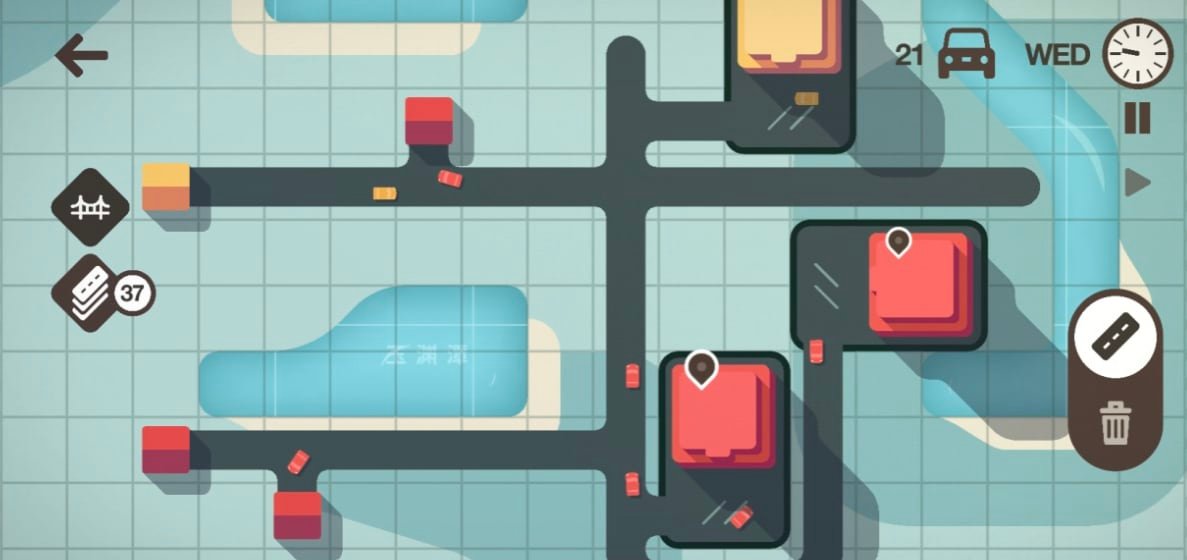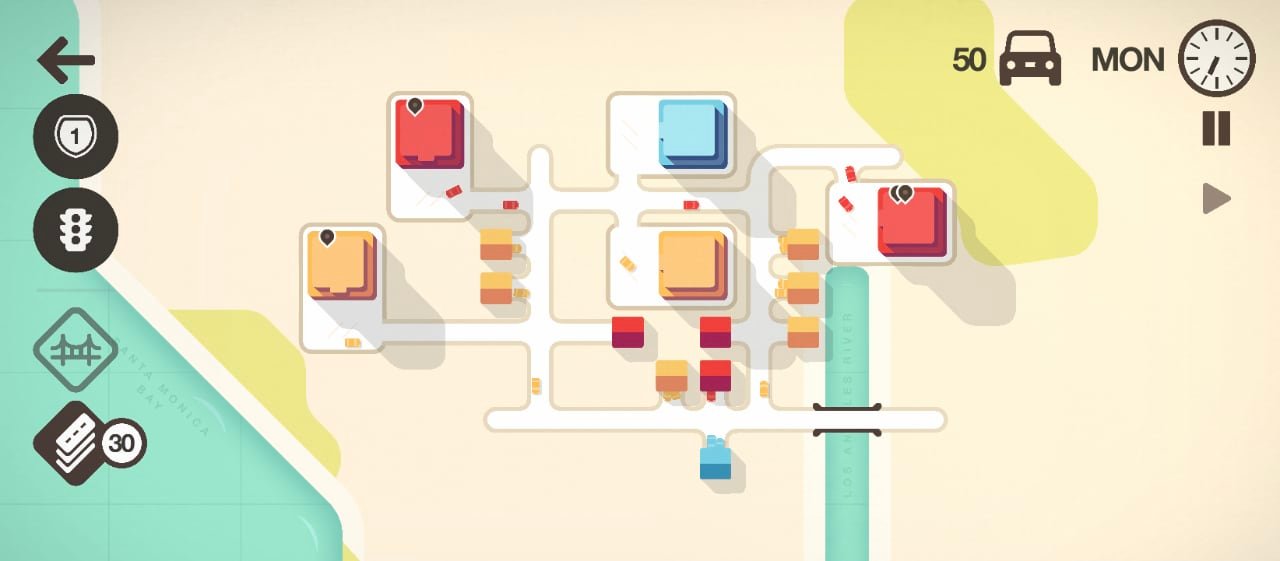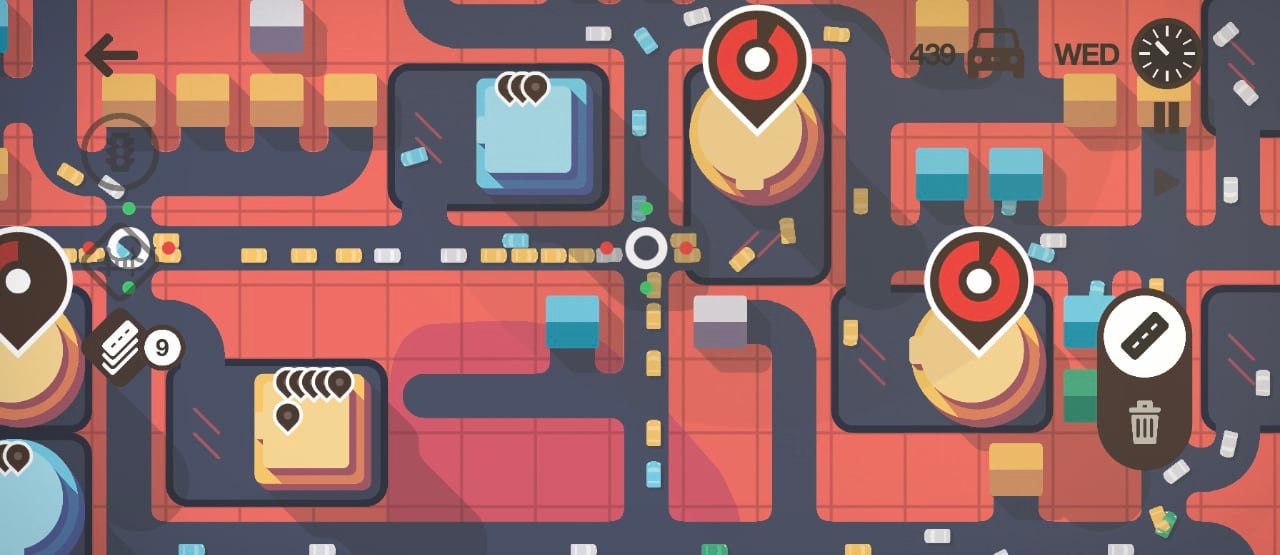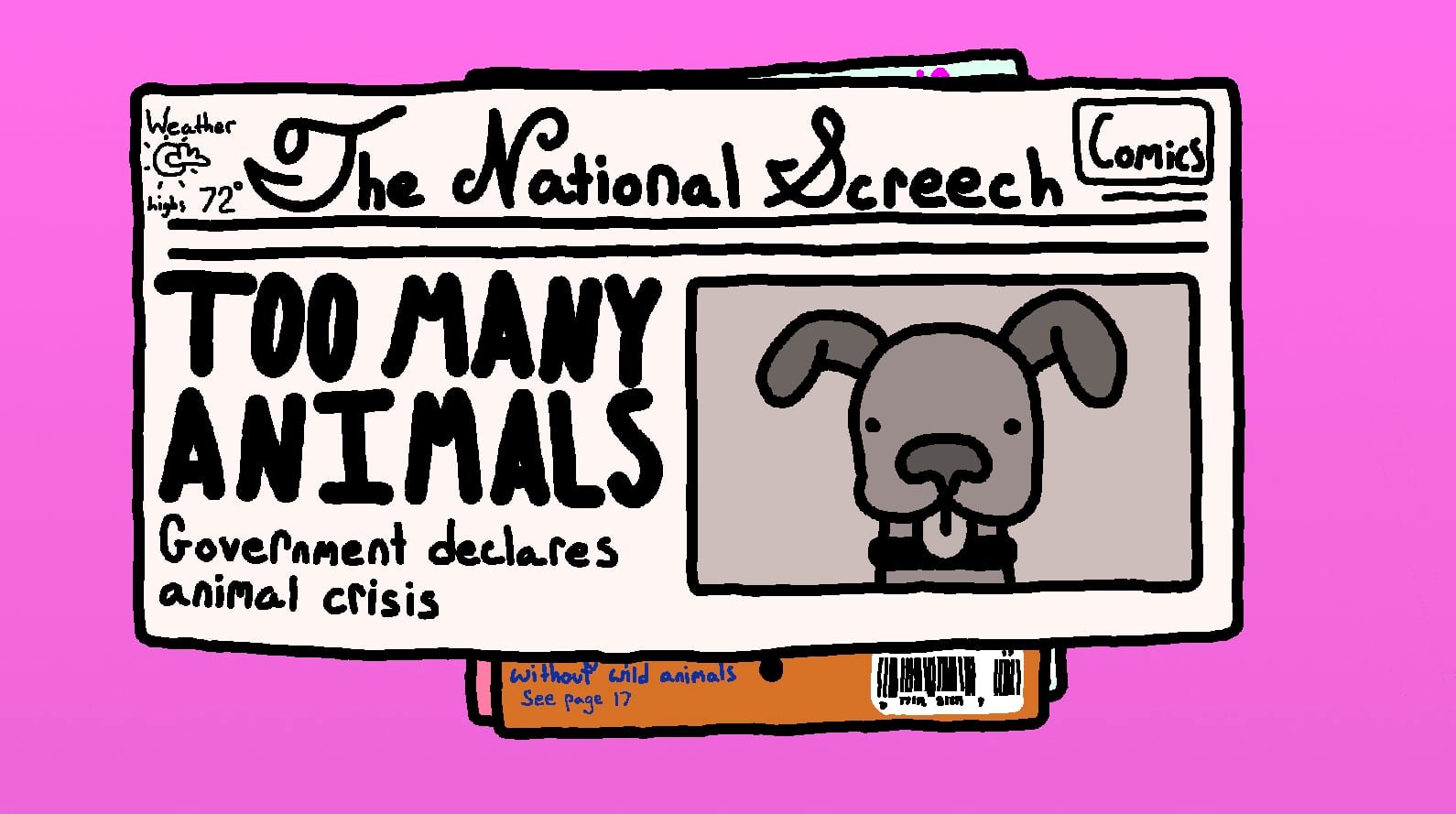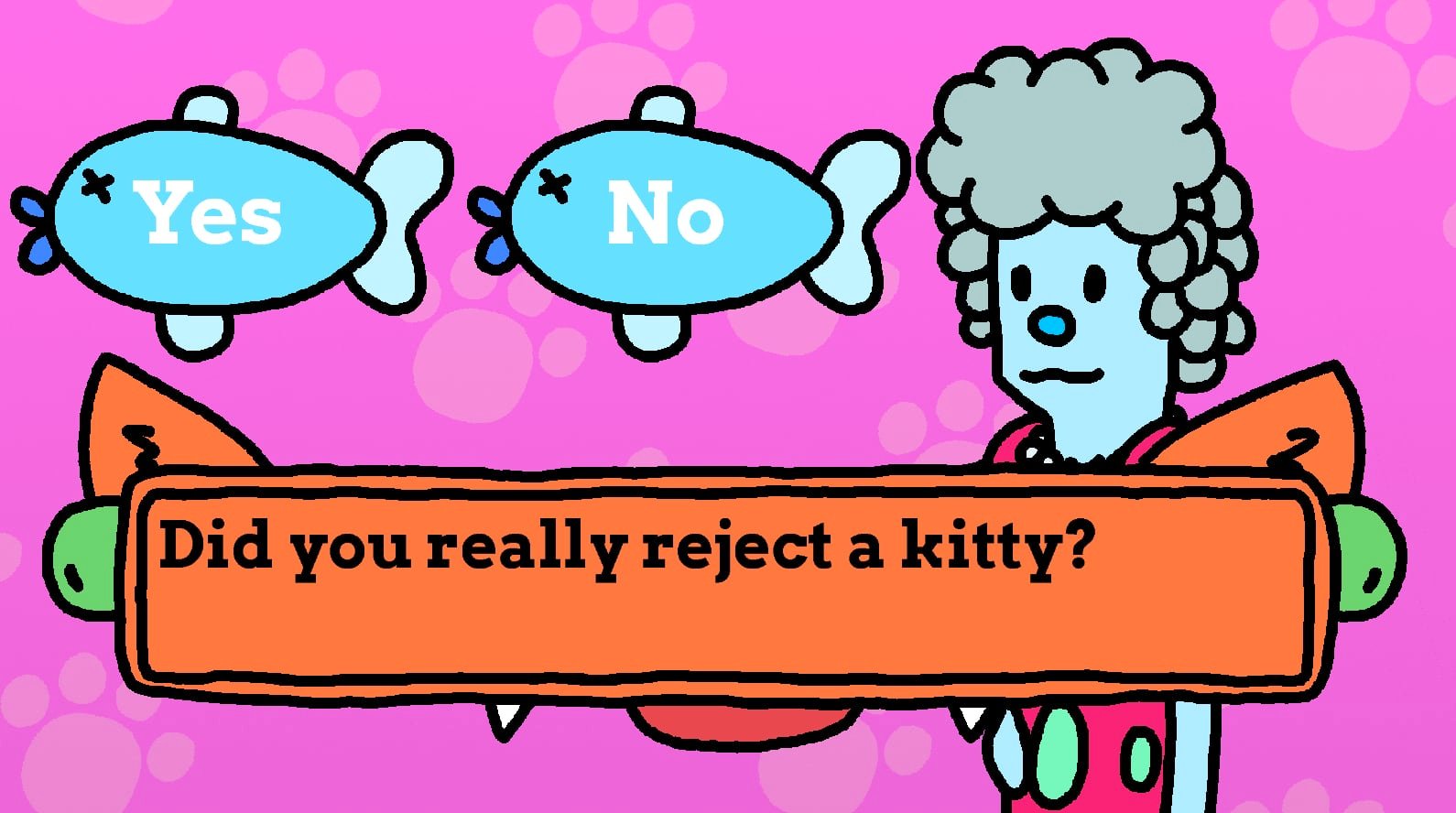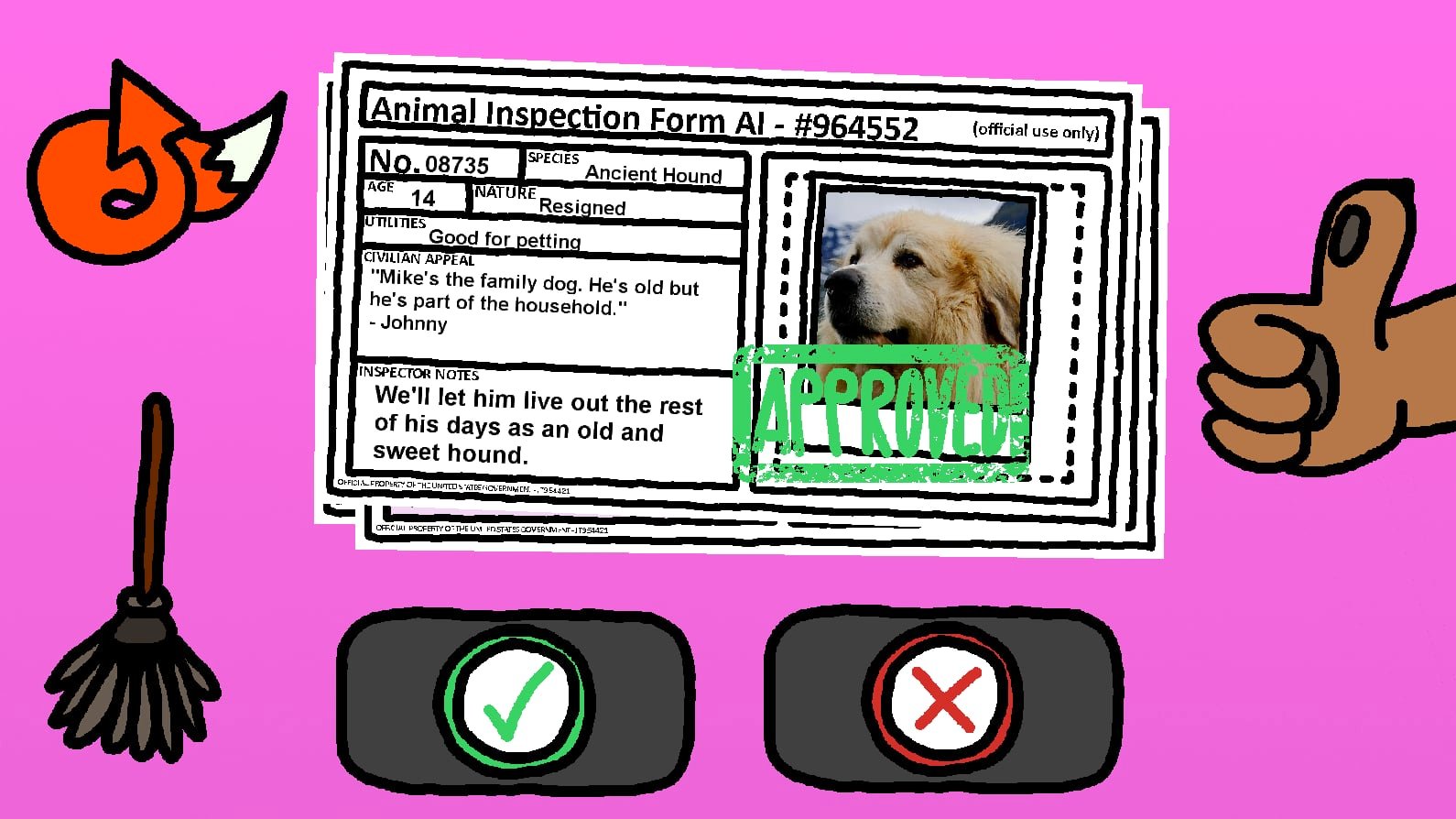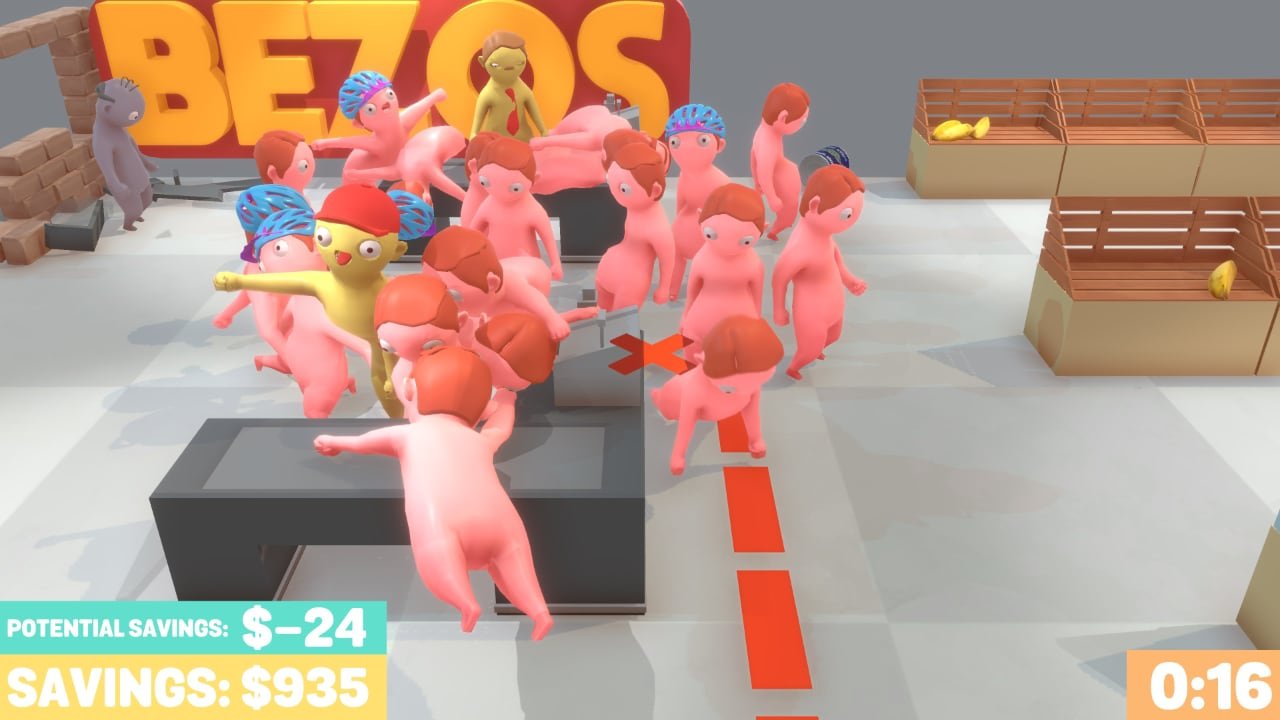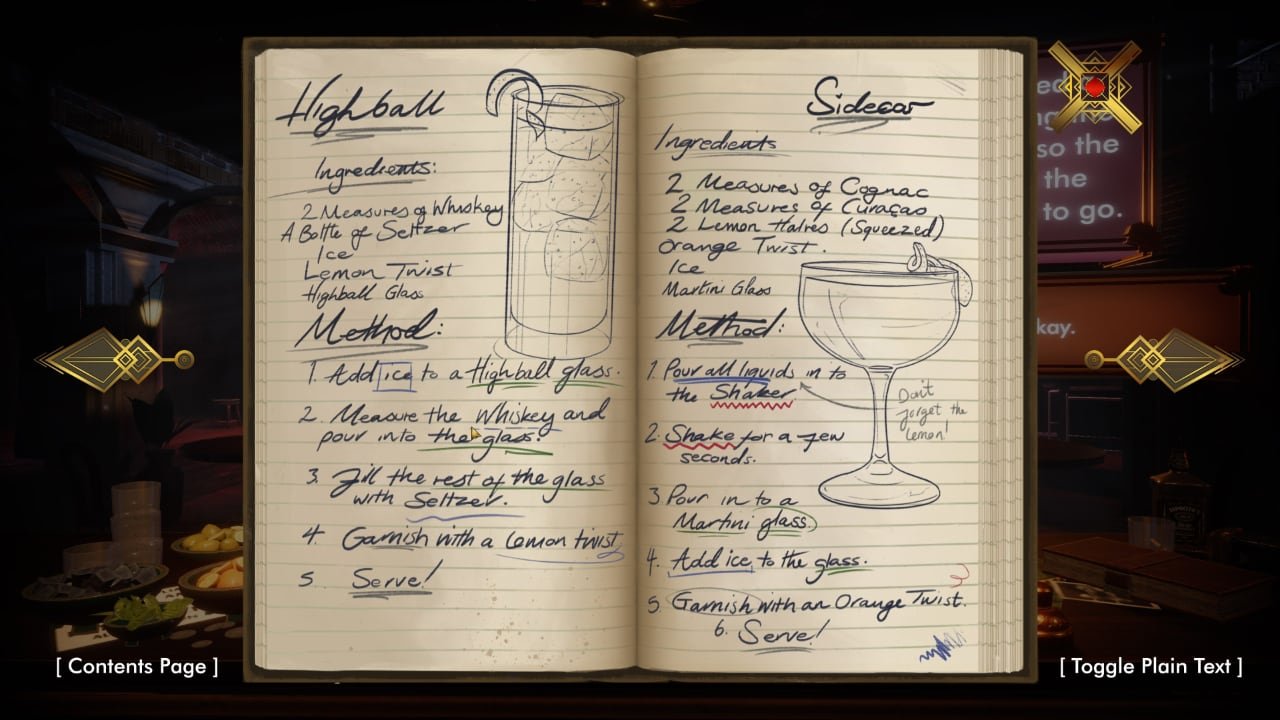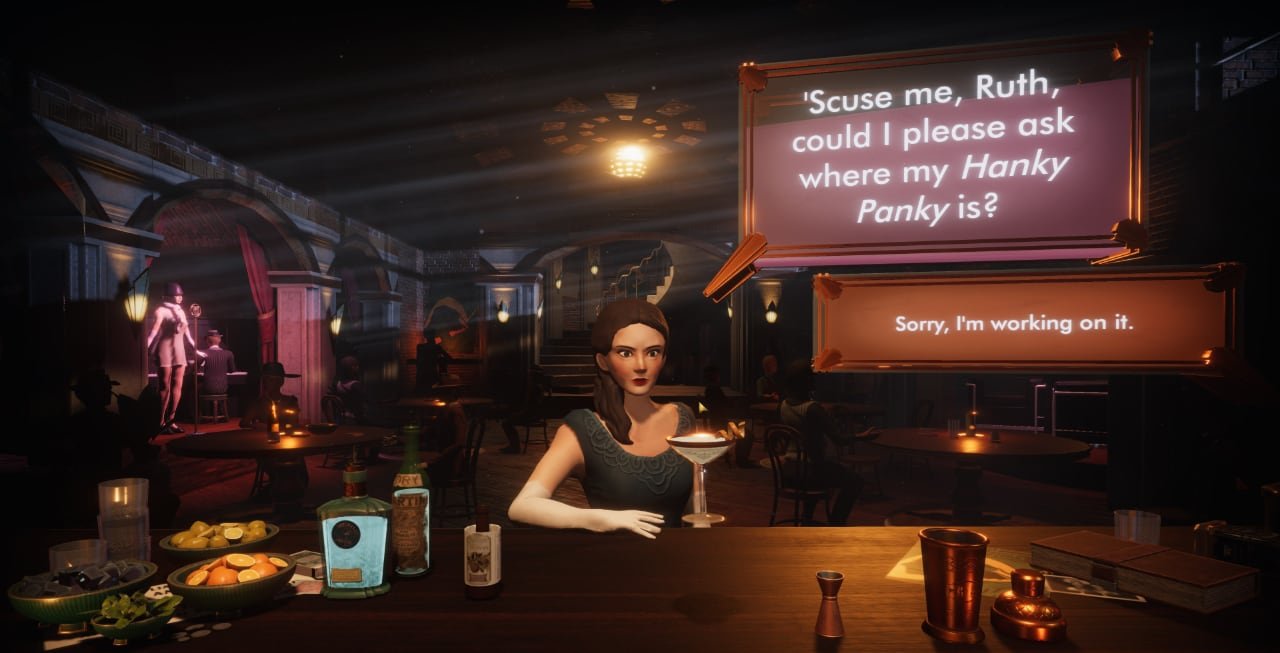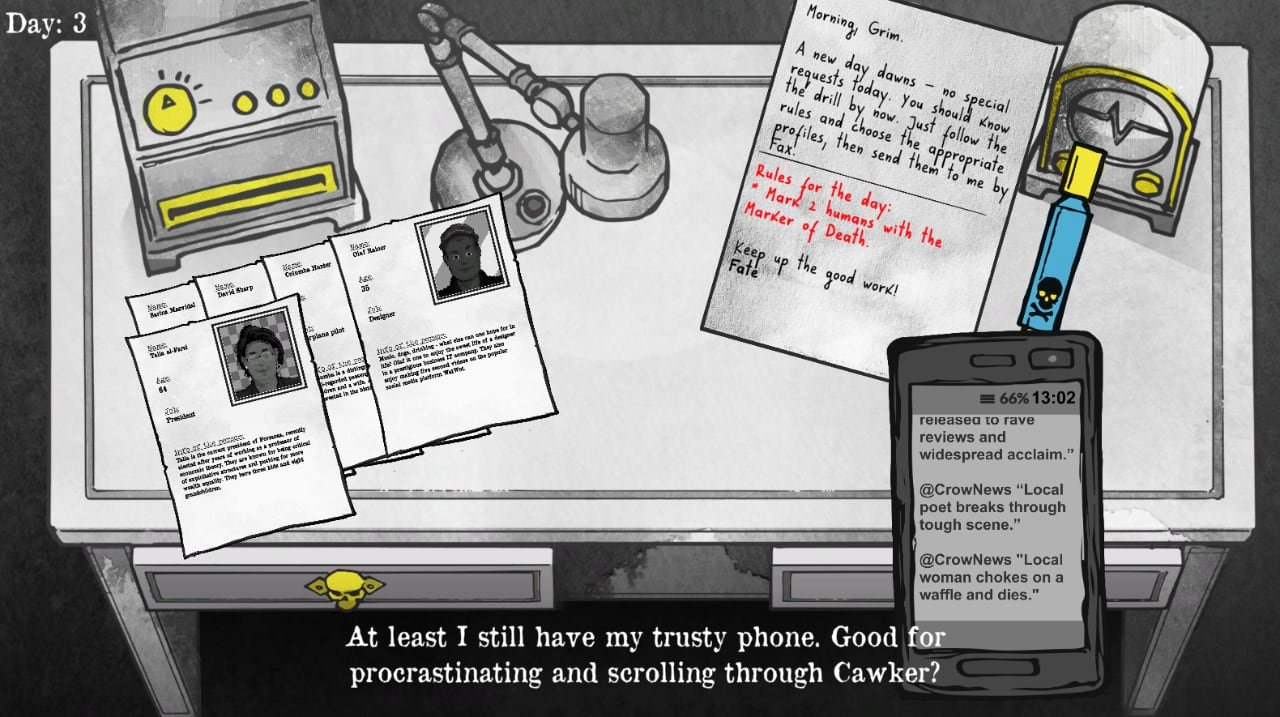
Death and Taxes
Be the Grim Reaper and pick who lives and dies
You know the saying: “Nothing is more certain than Death and Taxes,” right? Well, in Death and Taxes, you play as the Grim Reaper, assigned the job as the arbiter of death for humans in peril. It’s up to you to choose if they live or die.
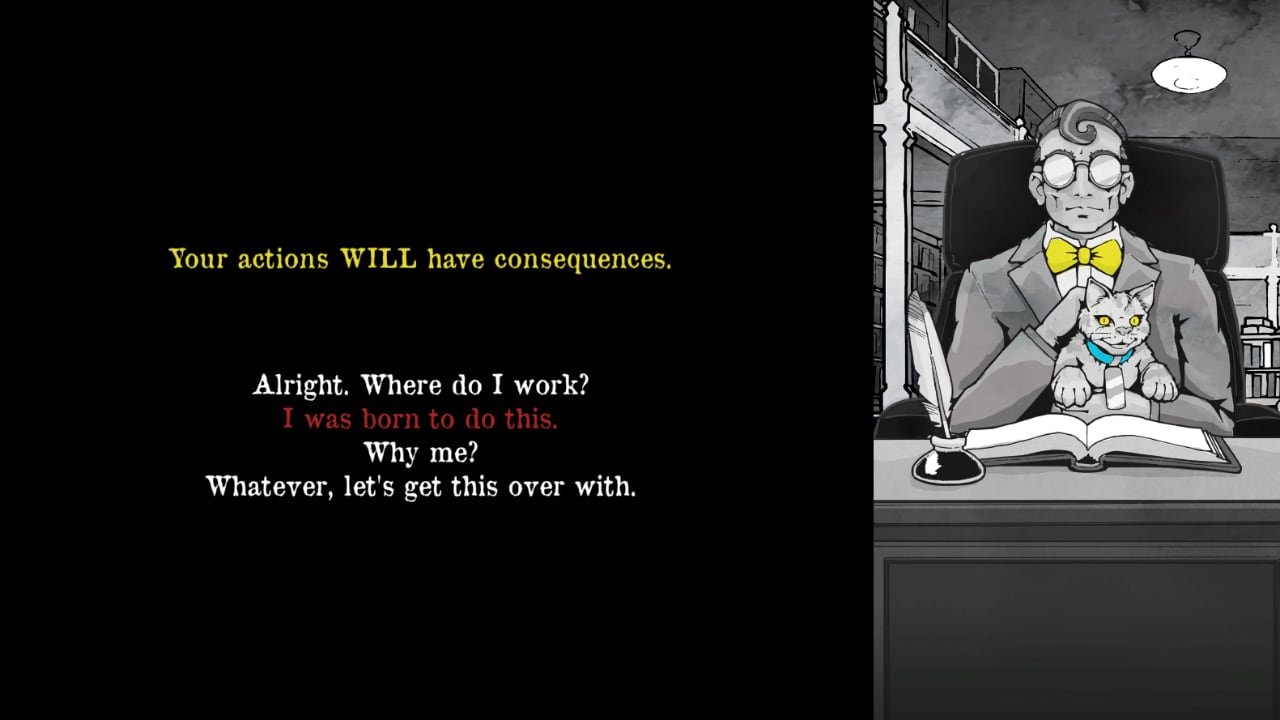
It's a boring office job, with perilous consequences
Fate, your boss and keeper of world order, assigns you a new batch of humans each day from your assigned region of Cosmopolis City in Sun County. Your instructions might be to mark one or two people with the Marker of Death, or—more sinisterly—to mark anyone with an engineering or medical background. You could mark Charlie Gocq, the CEO who practices insider trading, or David Garver, an IT architect that builds digital assistants. Or you could ruin the life of a sweet grandma who collects porcelain.
You keep track of the news on your phone—using Cawker—that shows tweet-like news reports, like threats of fire in Sun County, or an announcement that a social media star has fallen off a cliff will taking a selfie. Following Cawker helps you keep in touch with the world, and measure the impact of your actions: take out too many people in the medical field, and you’ll see tweets (cawks?) about an epidemic.
Yeah, it’s another tinderlike game—you’re given a stack of humans in peril and mark those for death based on your instructions. Like in Animal Inspector—you don’t get free rein over your choices. Instead, you do have to report to your supervisor who assigns you different work. There’s still something so compelling about the presence of choice in these games, even if the gameplay isn’t super shaken up from it. You can still disobey, and it has a bit of an impact on the world.
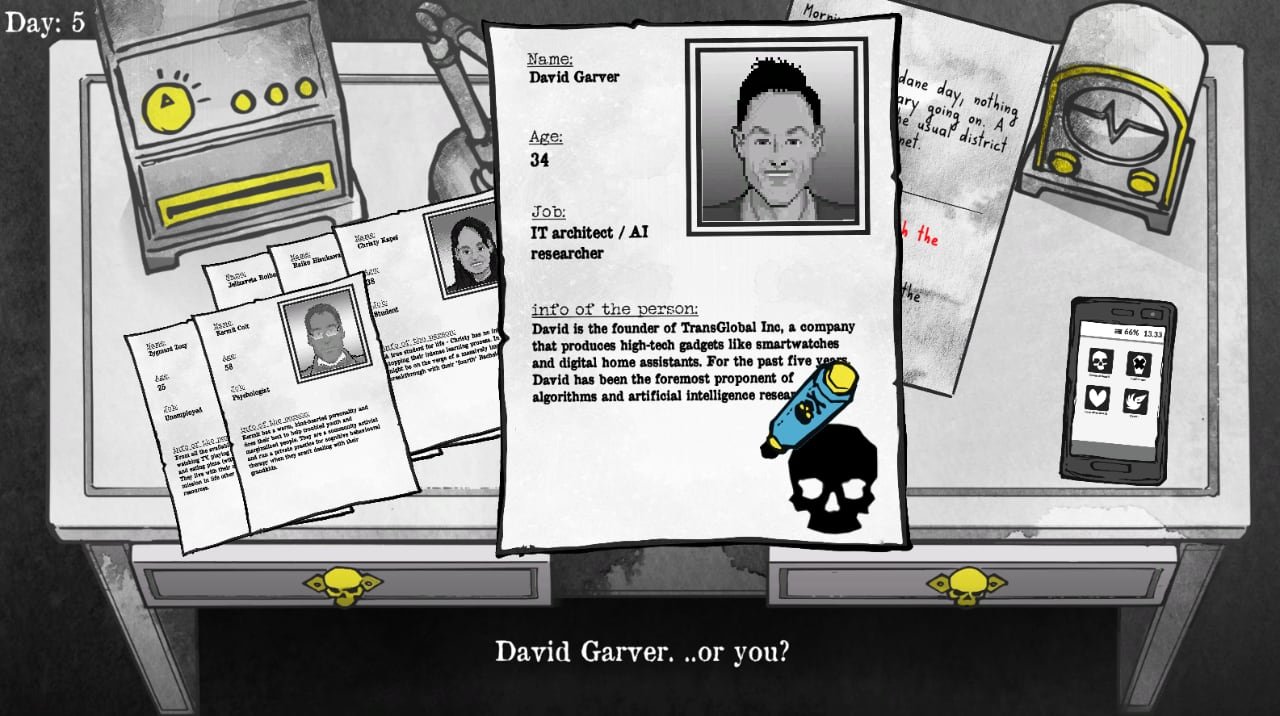
Does death matter?
The introspectiveness is what makes this game interesting. It trades away some potential silliness, and instead, you face some philosophical conversations with your boss at the end of each day. There are some tough questions for you to think about, like if it’s even ethical for you to be making these choices at all. Some responses could be silly or flippant, but there’s a lot of meaty answers like “you’re the one that gives me the rules,” or “I’m not happy about the situation.”
And for that, Death and Taxes is an engaging game for all the questions it poses—who really should get the thumbs up or down compared against someone else. It’s a free demo available on itch.io.
